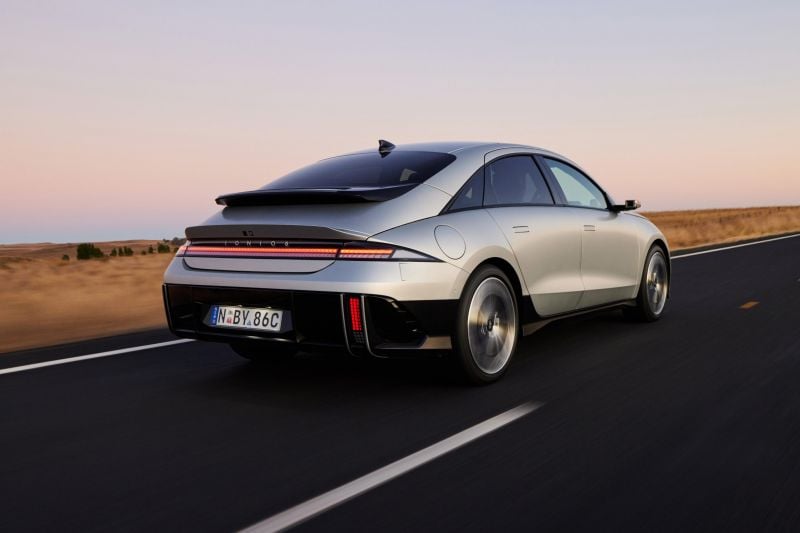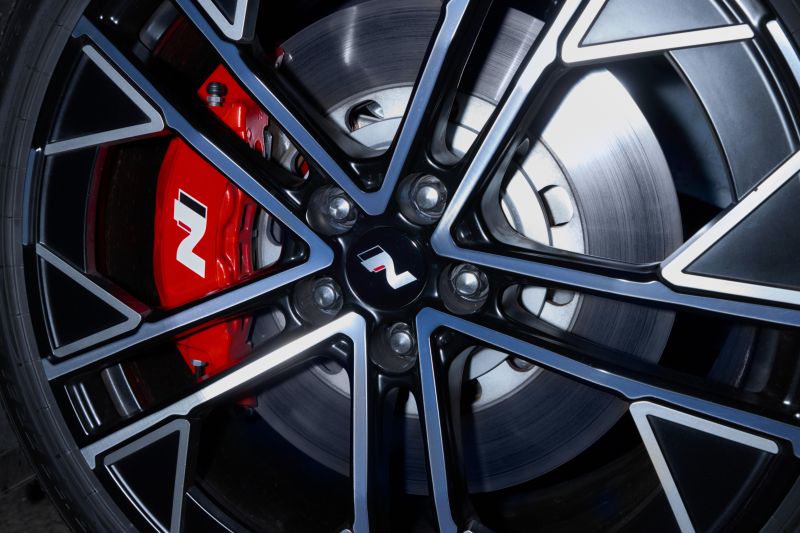SPONSORED
Regenerative braking is now a standard feature among both BEVs (battery electric vehicles) and PHEVs (plug-in hybrid electric vehicles).
It’s a mechanism that effectively harvests the kinetic energy usually lost during braking, and feeds it back into the lithium-ion drive battery.
It also slows the car down and in some cases can bring the vehicle to a complete stop, which is usually referred to as one-pedal driving – meaning you may not have to use the brake pedal at all depending on conditions.
In the Hyundai Ioniq 6, this feature is referred to as i-Pedal – which can be engaged by pulling one of the steering wheel paddles. However, should drivers want less invasive regen braking they can either choose Auto, or a range of three varying levels of intervention.
The advantages of regenerative braking far outweigh any disadvantages with the technology, especially when you consider the fact in a conventional braking system a car slows down by the driver pushing the brake pedal which applies friction between the brake pads and rotors (discs).
It’s also hugely inefficient given almost all of the energy used to propel the car forward is lost as heat and dust in the braking process. It also causes significant wear and tear on the braking system itself (pads and discs) which are always expensive both to repair or replace.
On the other hand, regenerative braking can capture as much as 70 per cent of the kinetic energy usually lost in a regular braking system. That said, the amount of energy recovered is dependent on the level of regen available in a particular make/model, as well as driving conditions at the time.
To best understand the mechanics of regenerative braking mechanism is to understand of the actual science behind the whole process. Effectively, kinetic energy is turned into electricity by reversing the very process that drives the wheels forward.
In EVs, the drivetrain is fed by a battery pack, which powers an electric motor (or multiple for all-wheel drive) creating the torque that rotates the wheels via the conversion of electric energy into mechanical energy.
With regenerative braking this process is essentially reversed. The motor acts as a form of dynamo that’s driven by the car’s momentum, feeding energy to the battery pack in the process. When you step off the throttle, the regenerative braking activates to slow the car down or stop it completely.
Most drivers get used to it quickly and experience ‘one-pedal driving’, where the car’s friction brakes are only required for sudden stops.
There are two big advantages with regenerative braking; less wear and tear on brake pads and rotors, together with additional range.
Brake pads and discs can cost thousands of dollars to repair or replace, which is where one-pedal driving can save you considerable money, given braking system components are rarely covered in capped-price service agreements.
By claiming energy usually lost during regenerative braking and feeding it to the battery pack, a vehicle’s range can be extended which can also mean less time spent at charging stations.
It’s a similar story for plug-in hybrids which also rely on an internal combustion engine, though the general idea is to use the car’s electric motor for most of the daily driving duties.
If there’s a downside to regenerative braking it’s that on some electric cars the brake pedal can feel different to what you’ve been used to in a conventionally powered car.
However, newer models like the Hyundai Ioniq 5 and Ioniq 6 have largely recognised this and calibrated the braking feel and pedal travel of the EV to feel more like that of a conventional petrol or diesel car.






